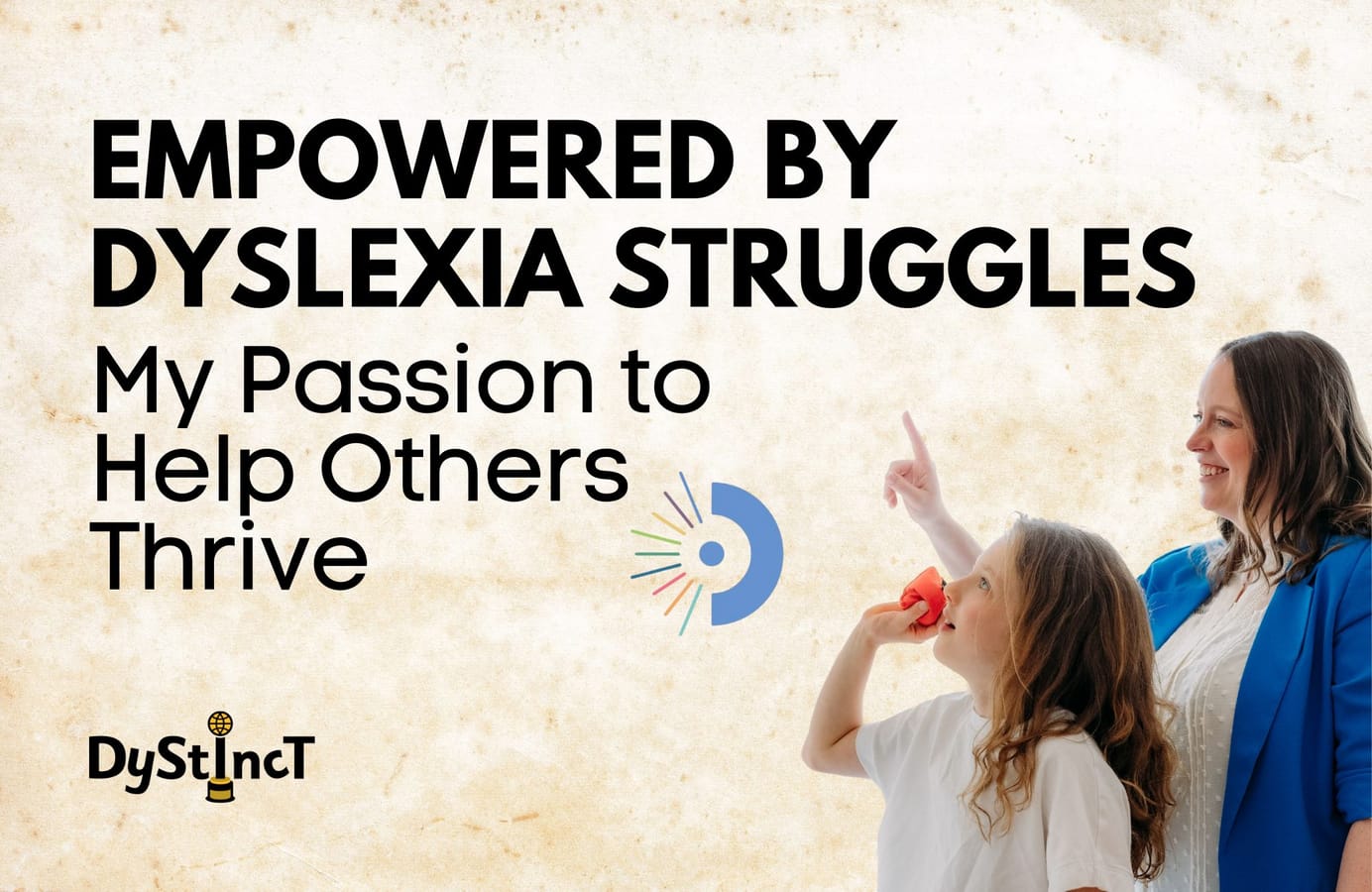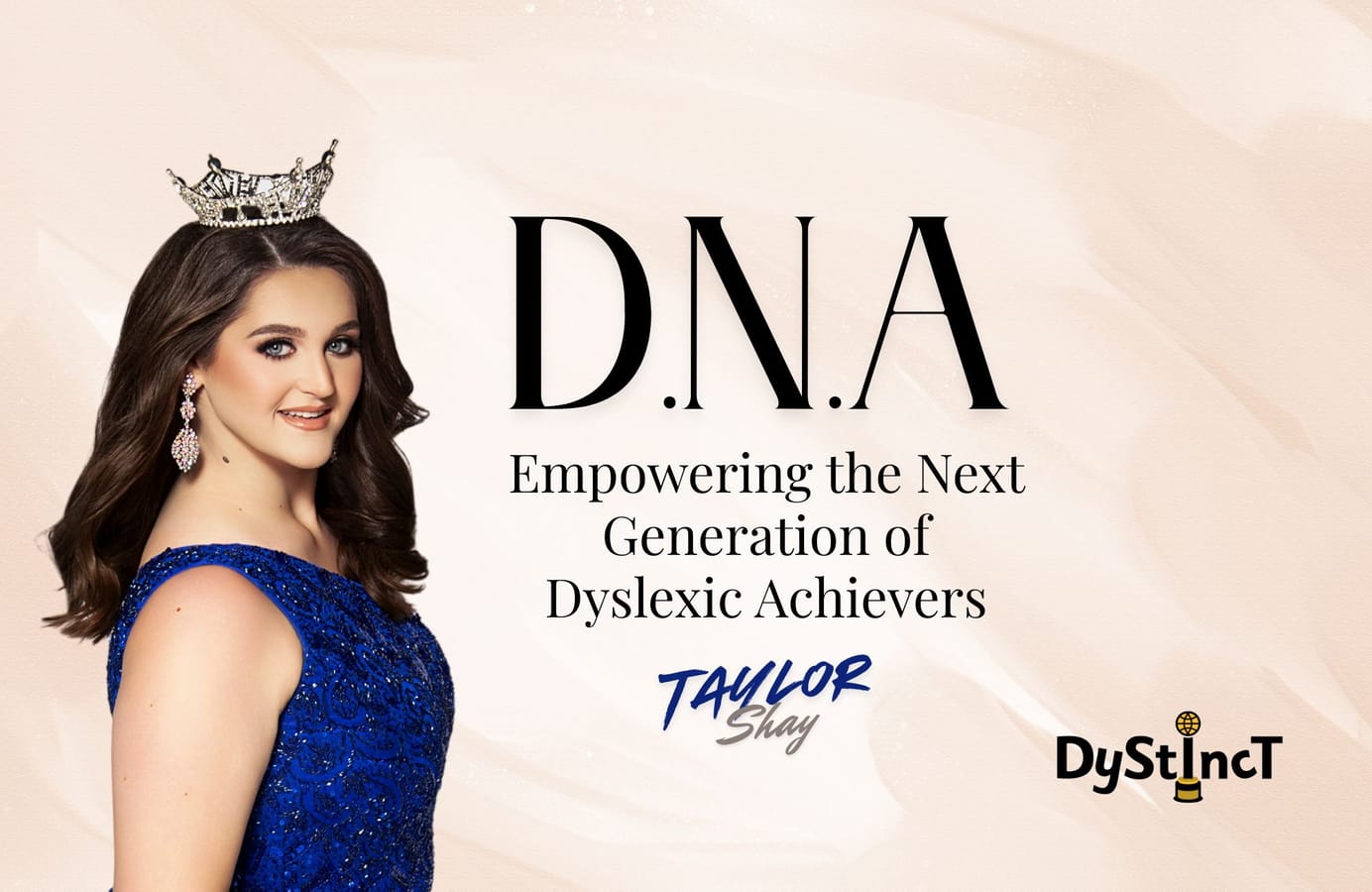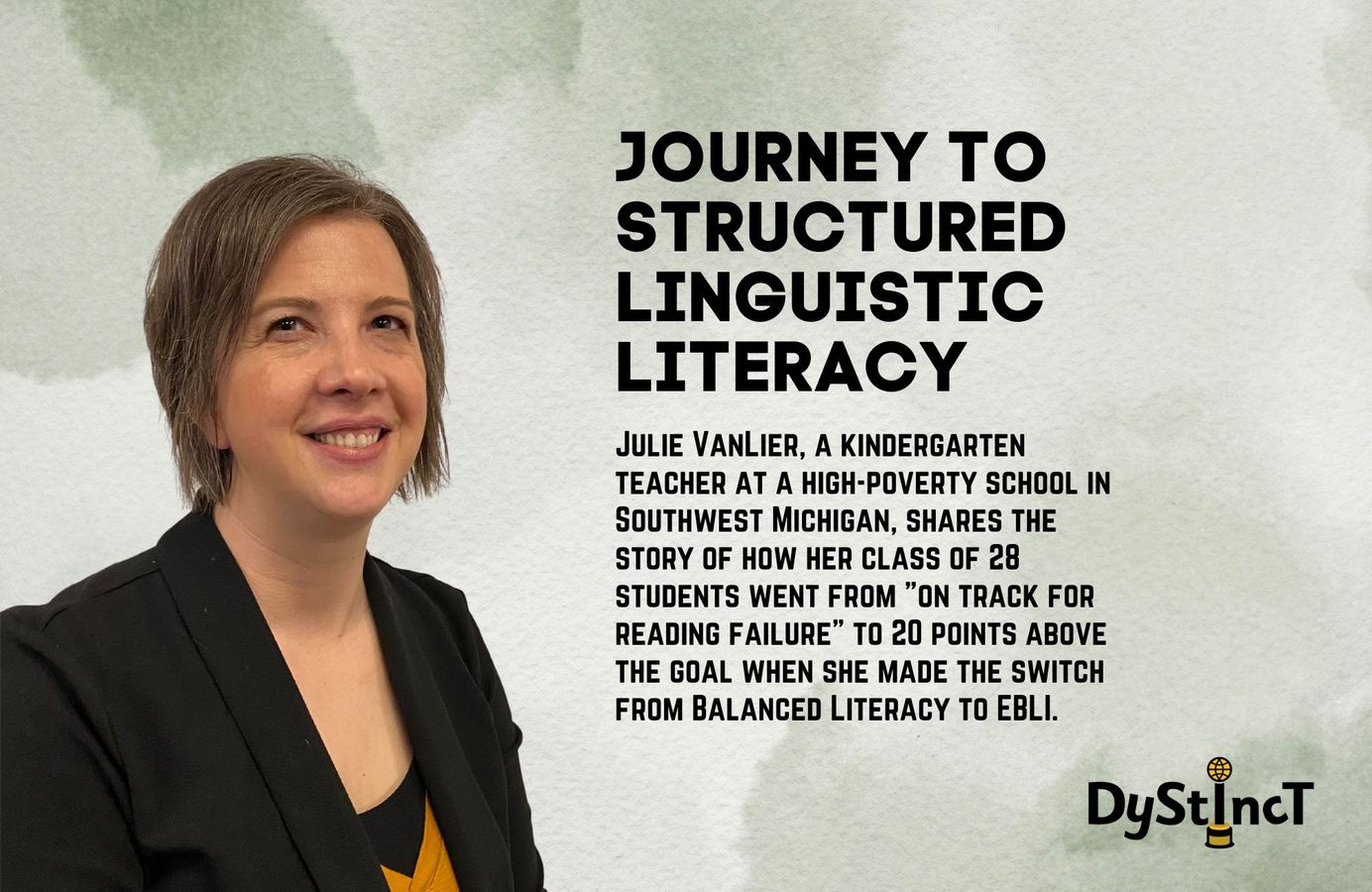
Issue 13: Journey to Structured Linguistic Literacy | Julie VanLier
Julie VanLier, a kindergarten teacher at a high-poverty school in Southwest Michigan, shares the story of how her class of 28 students went from "on track for reading failure" to 20 points above the goal when she made the switch from Balanced Literacy to EBLI.
At the end of last school year (spring 2022), as measured by Acadience, a criterion-referenced test of early literacy skills, 100% of my kindergarteners scored at or above benchmark on Phoneme Segmentation Fluency (PSF). Eighty-eight percent of my students scored at or above benchmark on Nonsense Word Fluency - Correct Letter Sounds (NWF – CLS). Their average composite score was 139 points – 20 points above the goal of 119.
Before you assume that I lucked out by getting a "gifted class," you should know that I teach in a high-poverty school in a classroom of 28 students, with para help for about one hour each day. Many of our parents have a high school diploma or GED equivalent. Prior to COVID, 76% of our students qualified for free or reduced lunch. Typically, at the beginning of kindergarten, most of my kiddos cannot properly hold a writing utensil and cannot write their names. If you were to ask them what sounds their mouths say for letter pictures, they would look at you as if you had grown an extra head!
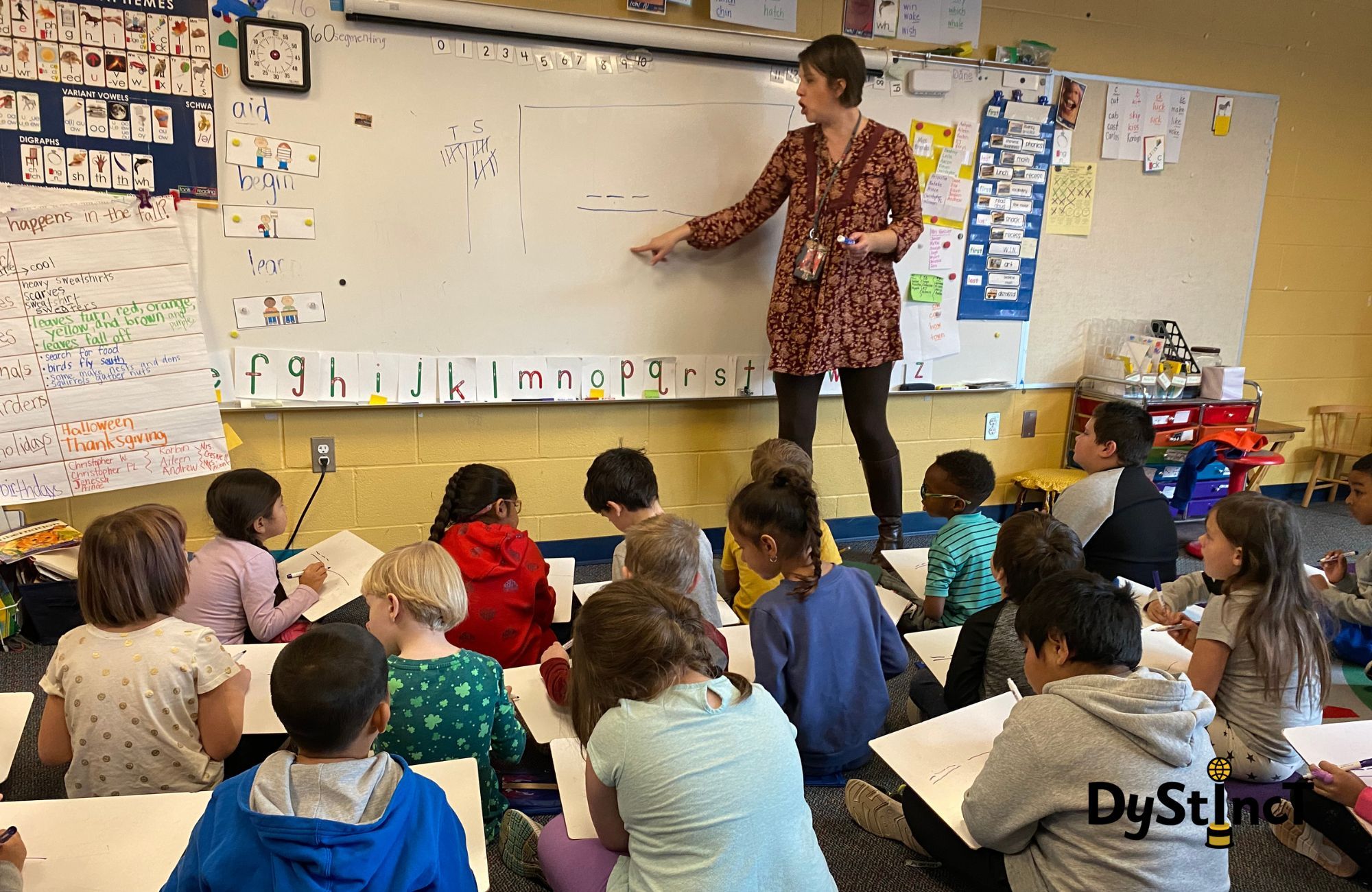
Going back nine months to the fall of kindergarten last year (2021), my Acadience scores showed that the majority of my students were on track for reading failure. For First Sound Fluency (FSF), 58% of my kiddos scored below or well below benchmark. Their average composite score was 24 points – two points below the beginning of year goal. Compare their beginning of year scores to their end of year scores. It was not that I lucked out with a "gifted class." Rather, I had stopped using Balanced Literacy and switched to EBLI (Evidence Based Literacy Instruction), an explicit and systematic curriculum that taught my kiddos to crack the reading code. Those 28 students won the proverbial reading lottery - by getting a teacher who refused to teach a reading curriculum that knowingly keeps kids illiterate.
To all the teachers, administrators, and policymakers who are blaming COVID for poor reading test scores, I have two words for you: COVID-SCHMOVID. COVID is not the reason that kids (and adults) struggle with reading. In fact, my highest reading scores have been post-COVID. Let me say that again. My highest reading scores have been post-COVID. (Prior to COVID, my students' Acadience scores for Nonsense Word Fluency - Correct Letter Sounds averaged about 60% of kids at or above benchmark at the end of the year.)
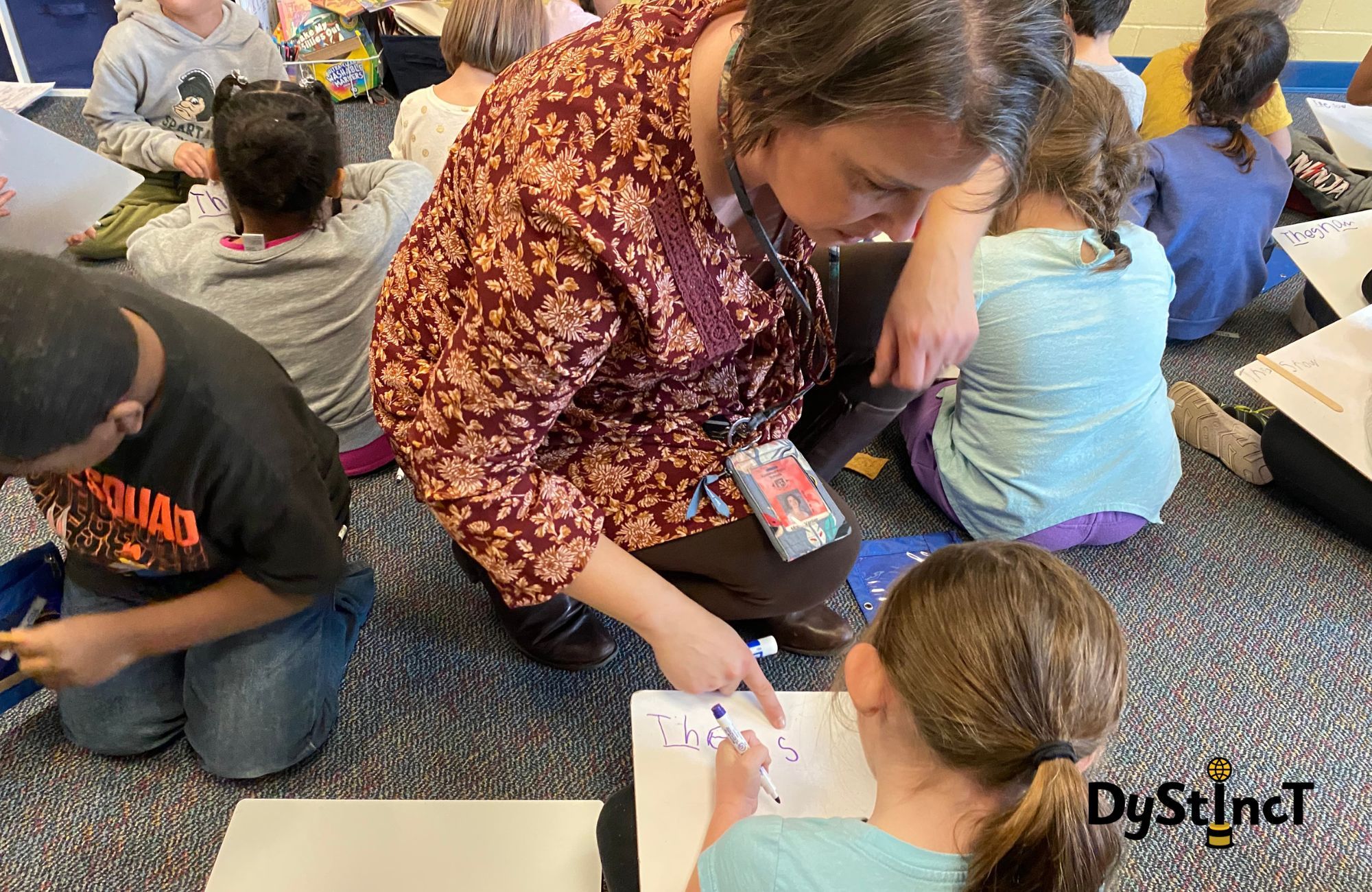
Kids (and adults) are subliterate readers because of the philosophies and curriculums we use to teach reading. Since the 1960s, teachers have falsely believed that kids learn to read the way they learn to speak – by being immersed in it. At first, this approach was called Whole Language, and then when phonics was haphazardly thrown in, it was renamed Balanced Literacy. I have been teaching in lower elementary for 22 years and have taught using both Whole Language and Balanced Literacy.
Prior to switching to EBLI, which is a Structured Linguistic Literacy approach to teaching reading, I was the self-proclaimed Queen of balanced literacy:
- Cozy reading nook . . . yep. ☑️
- Objects labeled around the room for kids to read . . . yep.☑️
- Cool pointing sticks to use for each month of the year . . . check.☑️
- Predictable charts . . . every week.☑️
- Class-made books highlighting a specific sight word . . . yep.☑️
- YouTube songs to teach letter sounds; flash cards . . . check; check.☑️
- Worksheets from Teachers Pay Teachers . . . yep.☑️
- Levelled books . . . of course!☑️
When students still could not read at the end of the year, I blamed them, their parents, their home lives... anyone but the real culprit: me and the curriculum I used!
Through this journey, I have come to realize that teachers don't know what they don't know, and they need to be given grace; nobody goes into teaching to intentionally fail kids. Student teachers assume that their colleges and universities are teaching current methods. Classroom teachers assume that their districts are providing them with high-quality professional development. But... once teachers (and administrators) know better, it should be considered educational malpractice to keep using literacy approaches that have NO SCIENTIFIC EVIDENCE. For some kids, teachers are their only hope for success in school and then out in the real world.
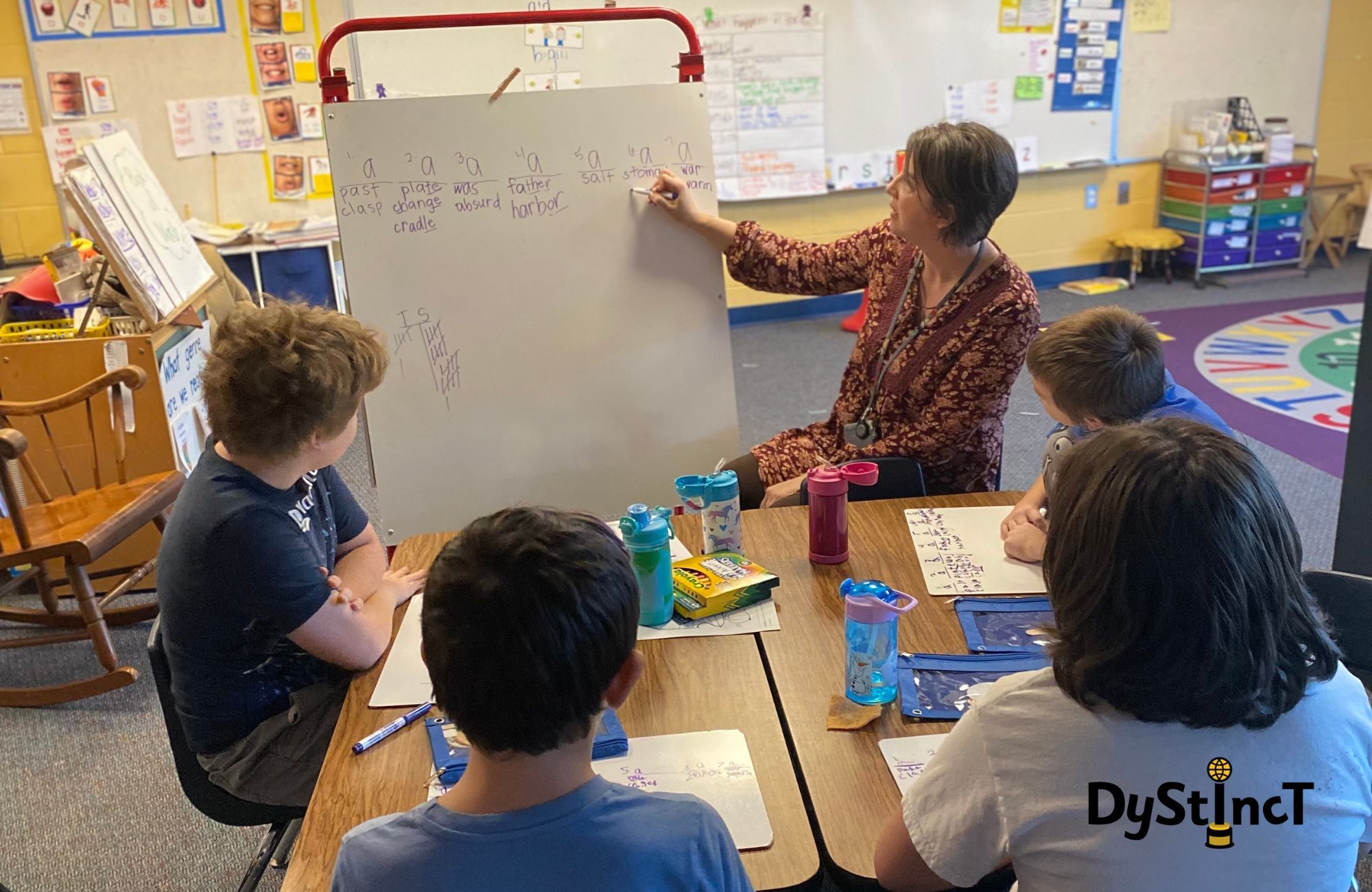
Now that I follow the Structured Linguistic Literacy approach to teaching reading, I no longer waste precious instructional time on syllable activities, rhyming activities, or isolating only the beginning or middle or end sound in a word. I do not teach capital letters first. I do not take all year to introduce the sounds, and I absolutely do NOT teach that letters say sounds – because letters cannot talk! Most importantly, I quit teaching silly rules that are only true part of the time, and I stopped teaching syllable division strategies.
Instead, my students begin playing with sounds in words on the very first day of school. On day eight of kindergarten, I teach them how to write three consonants and a vowel so that they can get their "talk written down". And by the end of the very first month of school, I'm sending parents a short video clip of their children reading their very first sentences! (This would have been unfathomable with balanced literacy!) Since I have started using EBLI, I have not once heard a student say that he/she cannot read or write a word. I never hear, "that's too hard for me", "I can't do that", or "I'm stupid". What really warms my heart as a teacher is when parents tell me stories of their kindergarteners reading at home – of their own free will. One little boy made his mom stop the television show whenever words appeared on the screen because he wanted to read them. Another mom told me the story of her daughter reading the words "hot" and "cold" on the kitchen faucet. When the mom asked how she knew those words, the daughter replied, "I said the sounds and blended them together."
The highlight of COVID is that it offered me the chance to become a better teacher. I used that downtime to learn what I should have learned in college classes and in professional development trainings mandated by my district. I became a critical thinker and consumer. Now, post-COVID, I refuse to go back to old practices that fail kids. In thinking back to last year – yes, I did get a class of smart kids– but it required me, the teacher, to let go of old practices and beliefs and embracing a better and more efficient way to teach them how to read, spell, and write.
My Acadience data says it all.
Julie VanLier
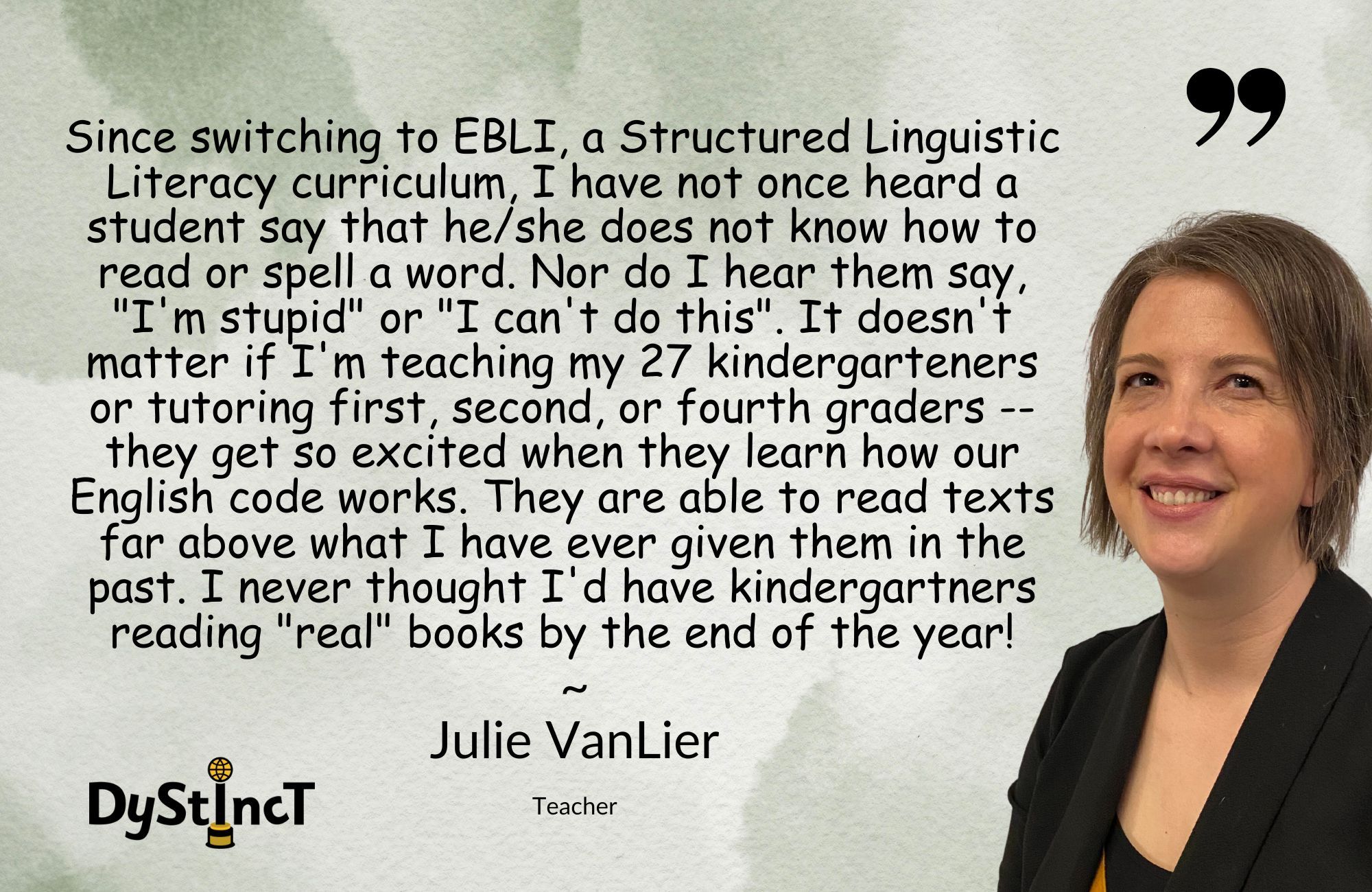
Julie VanLier has been teaching for 22 years in southwest Michigan (United States), the majority of the time in kindergarten. Although she has her early childhood endorsement, a master's in education, and an additional 30 credit hours of instruction. She was quite perplexed when she was trained in EBLI, and it went against everything she had ever been taught. Julie now believes so passionately in Structured Linguistic Literacy that she gives up her "specials" (the time when her kinders are at music, art, and gym) to voluntarily tutor other kids at her school who are subliterate. Her favorite thing about helping struggling readers learn to read is the way their eyes light up once they realize that sounds are spelled with one, two, three, or four letters and that English is a code that can be cracked.
Extracts from Dystinct Magazine










